June/July 2015
Land of the Sideways Sun
The Rest of the Story
Continuing with our topical look at the six weeks we spent in Iceland, we pick up our story with our short trip to Grimsey Island where we could once again visit the Arctic Circle.
At the Arctic Circle
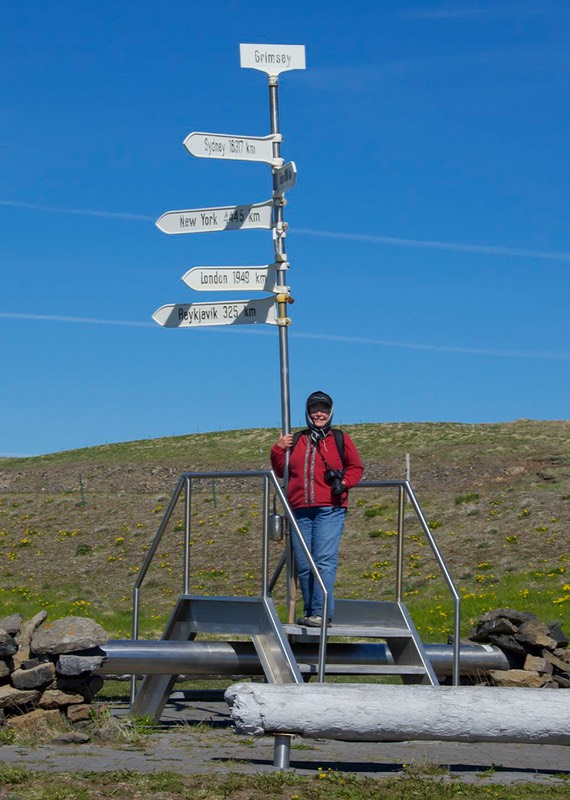
Our travels often take us to points that define and describe places on earth. Here in Iceland we’ve been able to visit a few of them. Most important, and one of the more compelling reasons why we wanted to come to Iceland, is to cross the Arctic Circle. Being so far north that the sun never sets (we call this the “sideways sun” because after about 11:00 pm the sun doesn’t descend any further; instead it scuttles along the horizon for the next several hours and then, around 2:00 am it starts to rise again) means you are at or very close to the Arctic Circle.
If you are keeping track (why?), during our fourteen summers on the road we’ve visited the Midnight Sun in four different summers and have crossed the 66⁰ 30’ latitude (aka the Arctic Circle) in five different countries: the United States, Canada, Norway, Sweden and Finland. (The only other “drivable” crossing is in Russia… perhaps another year.) We’ve become quite accustomed to falling asleep with the sun in our faces and not knowing whether it’s already morning when we get up in the night.
The Icelandic mainland comes close but not quite. That spot, the northernmost point of the island, is at the lighthouse at Hraunhafnartangi, near the hamlet of Raufarhöfn and less then three kilometres short of the Circle. We got there, but still wanted to go further up.
So, how to get above the AC? Well, within Iceland’s territorial waters is an island called Grimsey, and there you can get north of the Arctic Circle. It’s only a tiny island, but the line goes right through the middle. So off we went.
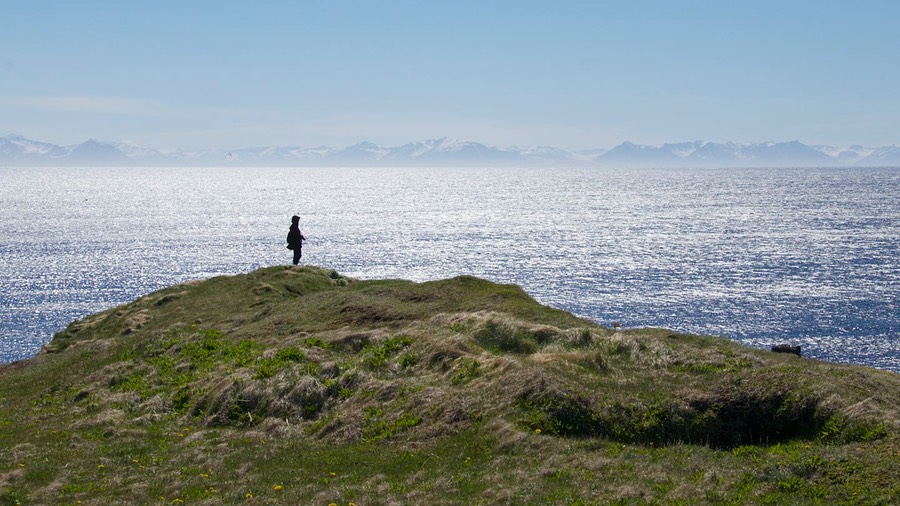
You start by driving to Dalvik, on the northern coast, and head out from there. And what an experience! There’s not much to Grimsey — a hotel, a restaurant and store, a few houses, a landing strip for teeeny airplanes, some sheep and puffins, and a harbor — but you can take a ferry out there. Now that ferry ride was a bit of something else. Rather rough heading out — 3 hours of bouncing over the waves and dodging the spray — with lots of folks losing it. Keep your eyes on the horizon. It actually does work. So survival was had by all. Then we walked most of the place (that took about 20 minutes), had a nice lunch, took our pictures of the Arctic Circle sign (and a few puffins of course), counted the sheep, and waited for the ferry back to the mainland. Fortunately, the trip back was much smoother (following sea). We arrived back and collapsed, but we’d done it. We’d survived the Hunt for the Arctic Circle yet again. (By the way, you can also get there by plane — calmer stomach probably but greater expense.)
So we’d been north as far as we could go; we also wanted to go to the western end of Iceland — and the westernmost point in Europe. That spot can be found in a prettier area, at the Latrabjarg bird cliffs in the southwestern part of the Westfjörds.
This southwestern peninsula (of the Westfjörds - how do we keep them all straight?) is calmer and quieter than many we’d been enjoying, and we liked it. The road was paved for awhile, and then, like many roads in Iceland, before too long it turned to gravel, sometimes easy, sometimes rough and more difficult. No trouble for the Tiger, of course.
We got out to the end and enjoyed the accomplishment, recalling our visit to the eastern-most point in Europe on the Finnish-Russian border, and pondering the location of the western-most spot on the Continent (somewhere in southern Portugal, we decided). Then we took a zillion puffin pictures, had lunch and trundled on.
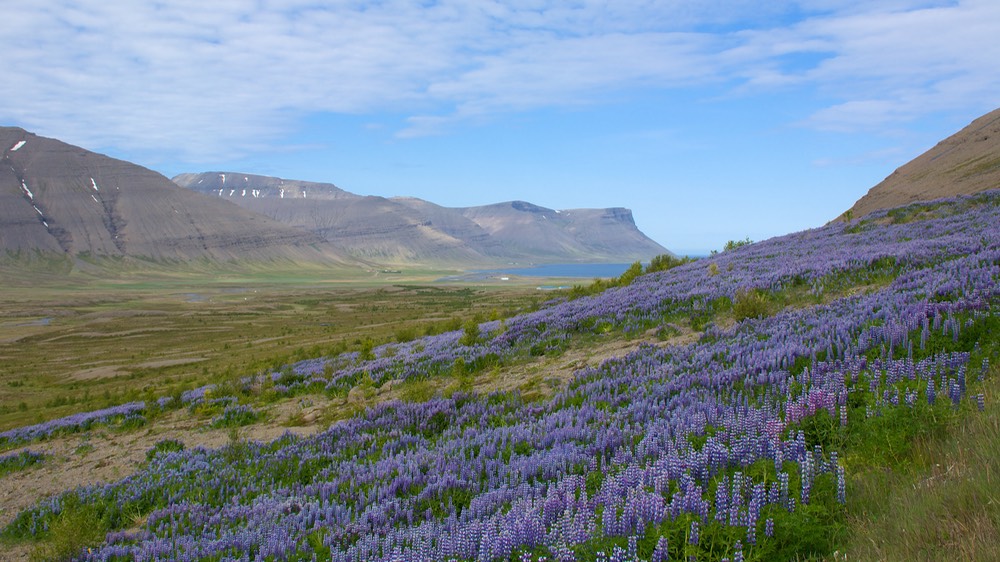
Lupine and Waterfalls and other Pretty Things
Iceland is absolutely chock full of lovely sights. Particularly in their short but sweet summertime. There are plenty of wildflowers, particularly at lower elevations. There isn’t much that grows very tall, and you’ll see some of the same roadside plants that are almost anywhere in the western world. At higher altitudes the arctic bog plants we have seen in lots of northern countries are quite prevalent. And you know me and bog plants; that’s what got me in trouble that day I fell through the crust and ended up in deep mud.
But what astounded and amazed (I know, I know; Kathy, you’re always astounded and amazed; well, so fine!) us was the gorgeous lupine we saw growing in so many places. Pretty little roadside plants greeted us as we got off the ship. Fields of them in full bloom were all over the southern side of the island. In the north they were a little smaller and not quite as prevalent, but still making quite a statement. By mid-July they were huge and bright and dominated the landscape. We couldn’t get enough of them. One night we parked in the middle of a field and almost buried the Tiger in them. He giggled as they tickled his toes.
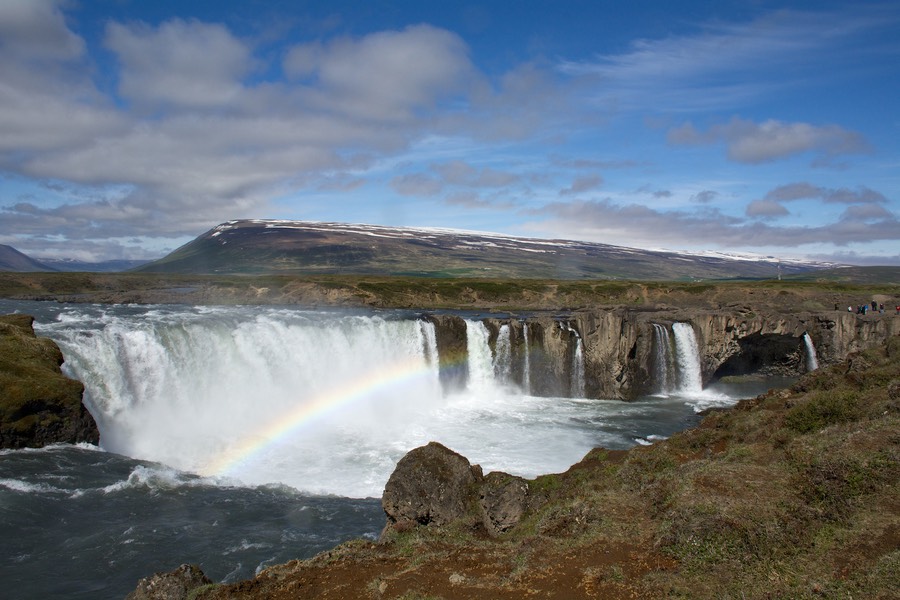
And then there are these magnificent waterfalls. Iceland has glaciers; glaciers melt and the water’s got to go somewhere… downhill. The geology of the island is such that there are shelves and then drop-offs, then shelves, then the ocean. So huge, famous waterfalls (we’re talking tons of water here dropping a great distance with great force) are all over the joint. After you’ve seen half a dozen you could start to get a bit jaded, but then around the corner there’s just one more and you climb up to where you can get close to the top and the mist rises around you and you can see and feel the force of the water and — well, they really are quite something. Some of them even come draped in rainbows.
We saw lots of waterfalls and they never ceased to impress.
So How About Those Volcanoes?
They are numerous and active. Earlier this year there was a bit of activity, which caused a small amount of consternation (I think that was mostly among the tour companies), but the locals are certainly used to it, as there have been significant eruptions in three of the past four years, not to mention the historical biggies.
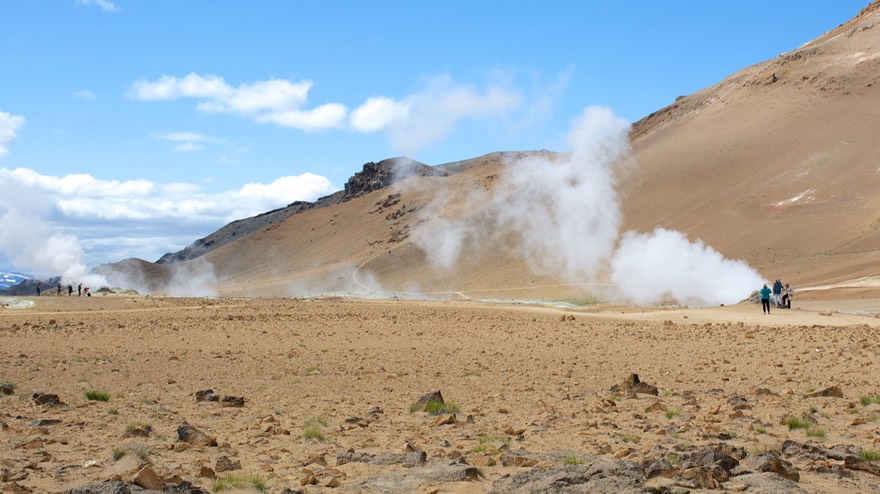
Along with the volcanoes comes plenty of lesser geothermal activity, enough to give the island an abundance of geothermal electrical generation that, along with the equally abundant hydro-electric from all the water running around, provides 99% of the energy needed for the entire population. Really neat. We suspect there are some emergency generators in case of a difficulty, but otherwise that’s it. No wind turbines, no oil or natural gas, nada. Oh, and then there are the natural hot pots and even hot rivers as well. Quite a place.
We visited several areas where you could get a really good look at what the volcanoes “produce.” One of the best spots we went to was Lake Mývatn. This is a lovely, very large lake area. There were a lot of things to enjoy there, but the most dramatic was volcanic activity. There were mud pots, steam coming out of the ground, geysers going off, lots of lava you could walk around in. There was also a huge thermal pool you could swim in.
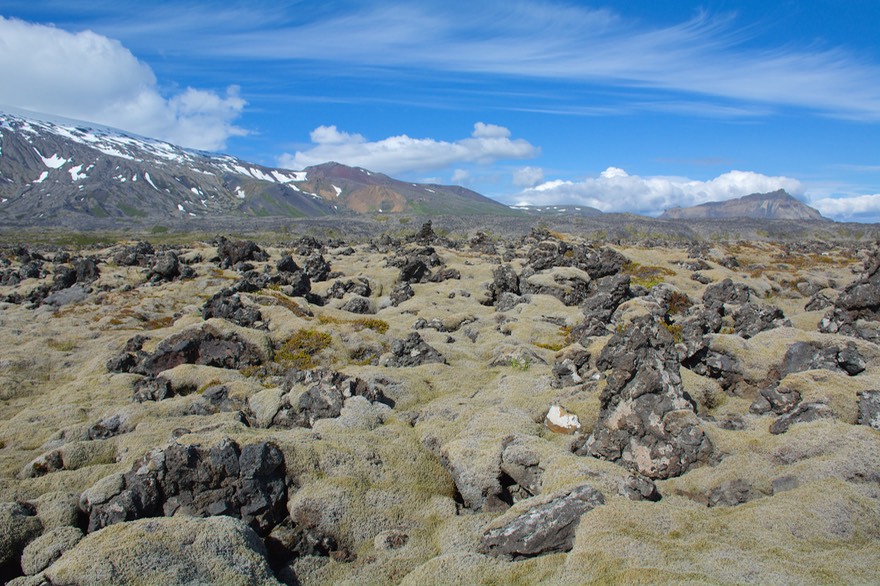
Throughout Iceland there were large barren areas where nothing was growing at all. Plants eventually grow in the holes in the lava (lava as we are familiar with it), but these were big sections, usually rocky, like a moonscape; very uninviting. We saw this mostly in the northeastern part of the country. You cannot visit Iceland without coming face to face with the power of volcanic activity.
By the way, for the technically interested among you, the reason for all this center-of-the- earth type activity is quite simple. Running right through the middle of Iceland, from the northeast to the southwest, is a rift caused by the gradual separation of the North American and European tectonic plates. The come together right here and are pulling apart at a rate of slightly less than one inch per year. It is this gradually widening gap that keeps letting the hot stuff out so to speak.
Kađy’s Saga
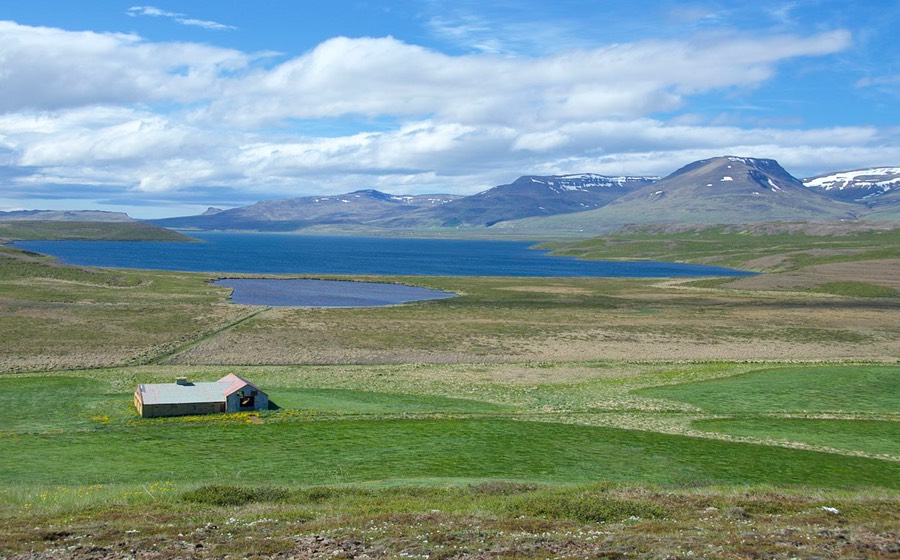
Maybe time for a little historical orientation? Iceland, since 1944, has been an independent, free-standing country. Prior to that it belonged to Denmark. There’s more, lots more, early history. For me, the interesting part was during the Settlement period, loosely between 870-930. During that era there was a large influx of people sailing across from the Scandinavian mainland, mostly from Norway (also some from Ireland, Denmark and other places where there are adventuresome travelers). In 930 a commonwealth was established; by this time there were about 60,000 inhabitants on the island. In the year 1000 paganism was abandoned and the inhabitants adopted the Christian religion.
During the 1200-1300s tales (sagas) that had long been told over the fire were first being put down in writing. These are the stories that have come down through history telling of the early settlers and about their lives. Aspects of these stories are true, although apparently they were embellished some to enhance the telling and make their descendants proud.
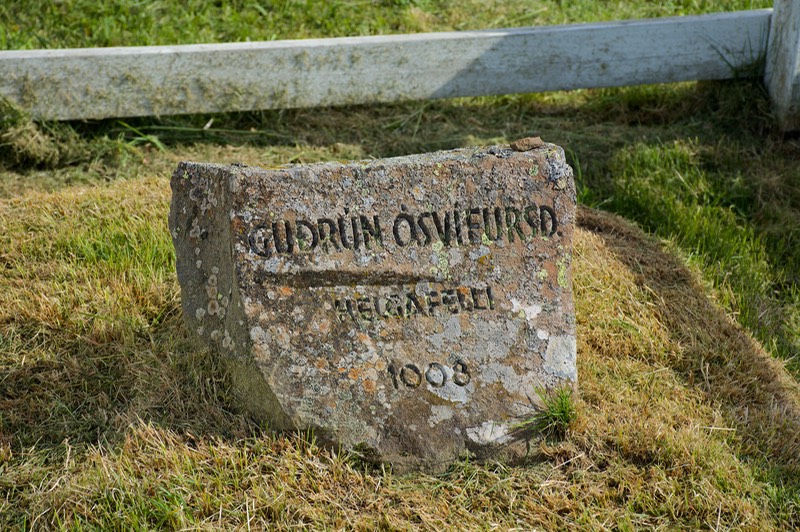
The true part, apparently, is that these stories were told about real people, in real locations, and there are still a (very) few places where you can visit and see gravestones, actual farmstead ruins, bathing pools and hot springs, and stand on a hill which was the same hill stood on by certain famous people at important moments in a saga (usually where they were killed).
A good friend had given me a copy of the Laxdæla Saga, written by an unknown author in about 1245, which I devoured before coming to Iceland. I wanted to spend some time visiting the places mentioned in the book, and see what was to be seen. I had a terrific time and my adventures became my Saga. My explorations had a large role in my enjoyment of our time in Iceland.
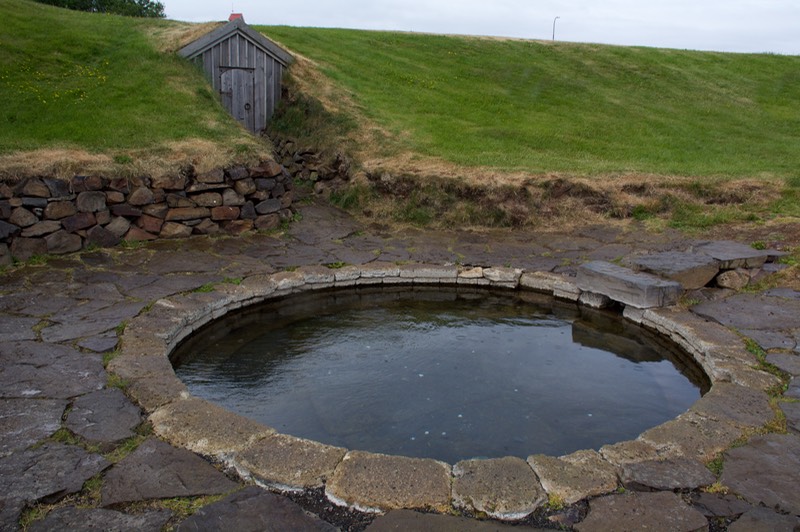
The Laxárdalur Valley is northeast of Búđardalur, in the general vicinity of the Borgones area, northeast of Reykjavik. It’s a beautiful valley (as is the entire area), and it is easy to see why it was settled so successfully. The people there prospered, fought, fell in love, killed each other over various sillinesses; the usual. It’s a great story and it was fun poking around. The heroine’s name is Guđrún Ósvifsdóttir, who died in 1008, and I visited her grave. Guđrún was quite a lady; she had 4 husbands, divorcing one of them and outlasting at least 2 of the others. Hers is a great love story. Makes a great read. One of the things I liked so much about her was this divorce business; it shows the status of women in early Iceland.
Snorri Sturluson (1179-1241) is famous in Iceland as a recorder of these early sagas; I visited a monument to him at Hvammur, where he was born. We also visited the excellent museum in Reykholt dedicated to his work, and where there still exists the lauger or hot pool he used at his farmhouse there. This museum was beautifully done and very informative.
Flash: Tiger Takes on the F Roads — Go You Tiger!!!
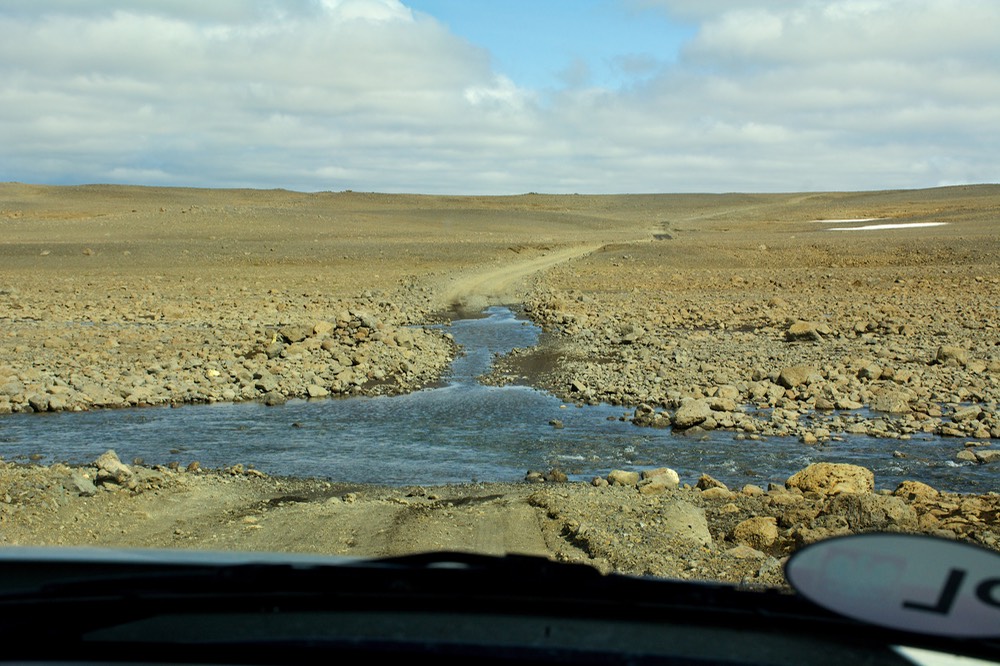
Well, for Rick the highlights of our journey were mostly out in the boonies in the interior of the country where tourists are few and far between and angels - or two wheel drive vehicles - fear to tread. The F-26, F-225, F-208, 206, and 910. These were the fun spots. The interior of Iceland is literally other-worldly; the astronauts came here to train for the moon landings. Bleak, barren, rocky, wide open and somehow lovely despite it all; it was a fascinating area to explore. Knowing that most tourists don’t get to see it just made it all the better. We felt somewhat challenged by not knowing what to expect, but in the end the roads did not present us with any difficulties the Tiger couldn’t handle. The one new challenge was the number of water crossings we needed to negotiate, but once we gained a little experience they became fun. The few deepest ones were around two feet deep — deep enough to get some water and muddy residue into the door well of the Tiger — while most were more in the one foot range. We stopped, along with a few other vehicles, at the very first one we encountered and waited for someone familiar with the road to come splashing through. Once we could see how deep the water was we were fine.
Aside from the adventurous aspects of these experiences, the rewards for the long hours of plugging along the rough roads was the scenery. Iceland has several very large ice caps, Vatnajökul being by far the largest, and we were able to view them from different angles. We actually saw Vatnajökul from all four sides, driving almost right around it. Also worth mentioning are the snow-covered mountains. They’re not terribly high, about 2100 meters is the biggest, but they carry lots of snow due to the northern latitude and are really beautiful. It was all great fun and our Tiger made it possible for us.
And so we move on
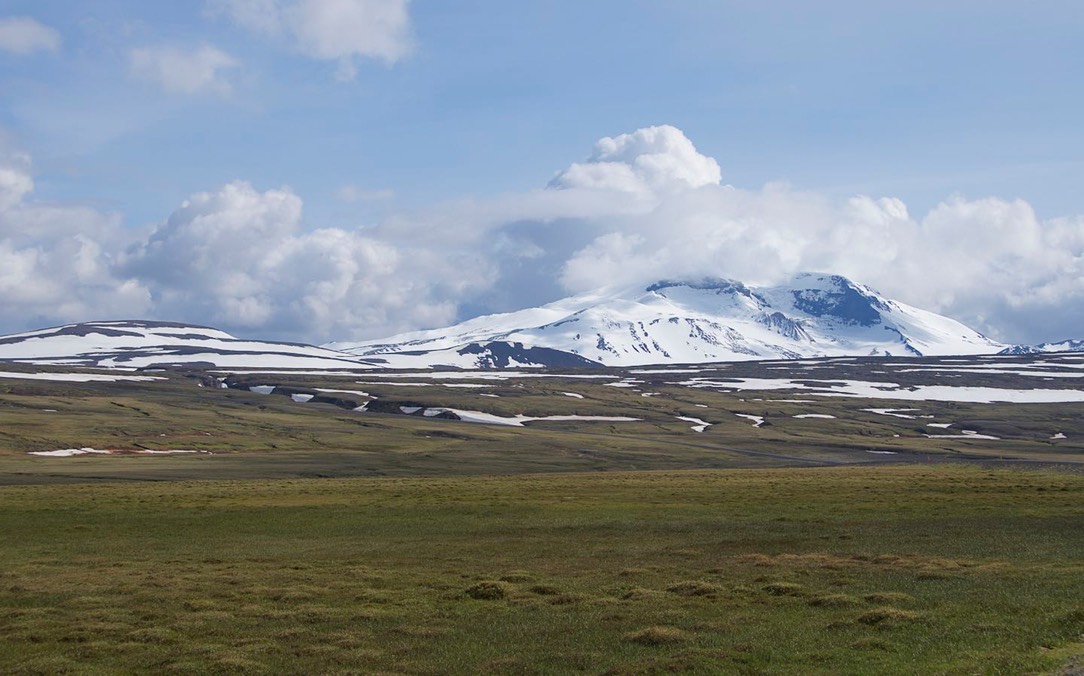
It’s hard to really grasp Iceland as a whole because of the variety of experiences and sights that make up a visit. There is beauty but also emptiness. There are virtually no trees to be seen, but, much like the desert, there are charms in the barrenness. It is cold and damp and windy much of the time, but nearly every community has a swimming pool with hot tubs for soaking in. There often isn’t a lot to do but there are rewards to be found in the solitude.
When we met up with each of our two sets of friends, all of us having been in Iceland for varying lengths of time and both of them traveling clockwise compared to us going around the other way, our reactions were amazingly similar. Well, it’s nice but not really spectacular. Underwhelming was the descriptive word we all agreed on. But… looking back on it as a whole after all is said and done, it’s really a pretty special place. Things to see and do and learn that are actually different from other countries. Perhaps it suffers a bit from being oversold; perhaps our expectations were simply too high. It’s hard to tell, but now that we’ve left Iceland, western Europe seems pretty tame and unexciting in comparison. We think that like some movies or books, Iceland will gain in stature as we think back on it and remember our experience.
One favourite spot was the Snorri Exhibition in Reykholt. The museum was excellent and had lots of good information about the early years of Iceland and particularly the history of the sagas themselves.
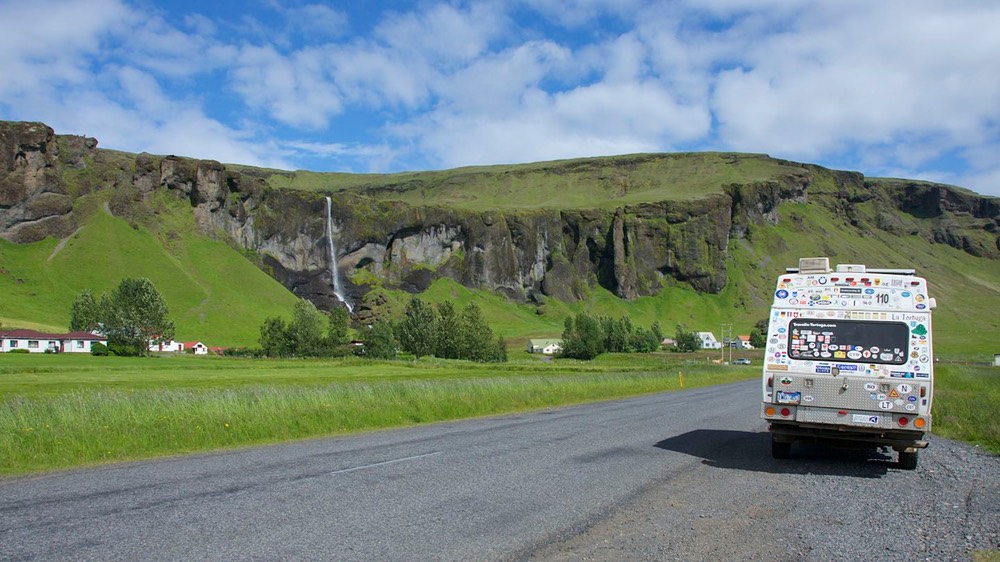
Another really great place was at Lake Mývatn, where we spent a couple of delightful hours at the Fuglasafrn Sigureirs Bird Museum. This is a large, well displayed group of all the birds of Iceland. The birds were collected here in the area and stuffed by a man who began showing his collection in the 80’s. After his death the actual museum was built in his honour. It’s beautiful, fascinating and very informative. We really enjoyed it, and it’s located on the edge of the lake in a famous birding area. Highly recommended.
The whale museum in Húsavík, the beautiful public baths in Akureyri, the wonderful puffins and Icelandic horses, the isolation of the Westfjörds…
Maybe more special than we realized. You’ll just have to go see for yourselves.
We only left Iceland a short while ago, and have just finished organising our hundreds of pictures in order to share them with you. Please be sure to follow the link below to the photo page and prepare to be amazed; we sure were!
Oh, and keep the home fires burning; our feet are still frozen!
Rick, Kathy and Macho-Tiger
Click to see our two sets of photos from Iceland: Icelandic Sagas, or Land of the Sideways Sun